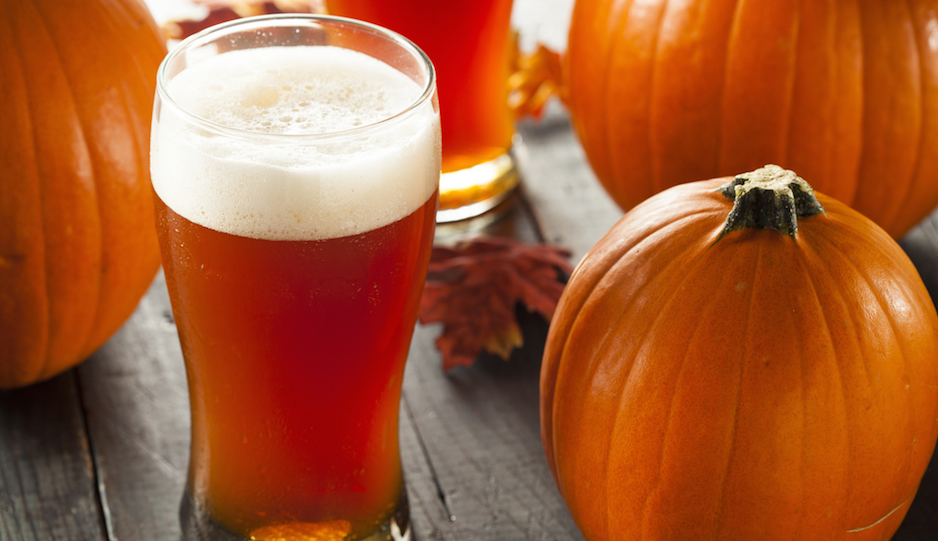Pumpkin beers date back to the colonial America when colonists where introduced to the native gourd. Since malts were hard to come by in the New World, early settlers turned to broad range of fruits, vegetables, and sugars to ferment. There is even mention of pumpkins being used to produce alcohol in what is believed to be America’s first folk Song “New England’s annoyances”
“Stead of pottage and puddings and custards and pies,
Our turnips and parsnips are common supplies.
We have pumpkins at morning and pumpkins at noon,
If it was not for pumpkins, we should be undone.
[If barley be wanting to make into malt,
We must be contented and think it no fault;
For we can make liquor to sweeten our lips
Of pumpkins and parsnips and walnut tree chips.]”
Furthermore, in the Oxford Companion to Beer, there is reference to how early settlers would produce wort from pumpkins “Pompion Ale”
“Let the Pompion (pumpkin) be beaten in a trough and pressed as apples. The expressed juice is to be boiled in a copper a considerable time and carefully skimmed that there may be no remnants of the fibrous part of the pulp. After that intention is answered let the liquor be hopped cooled fermented & c. as Malt beer.”
There is historical records showing that founding father George Washington used pumpkin to brew a pumpkin porter.
Creating a Pumpkin Beer-
Base Beer
Although a broad range of styles can be used to create pumpkin beers- ranging from pale lagers to stouts, even sour’s and pumpkin hefeweizen (letting the yeast provide the spice / clove notes), most recipes are in line with amber or Octoberfest styles. A traditional pumpkin beer is lightly hopped, and has moderate caramel / toasted flavors (think pumpkin pie and associated spices). A good traditional base is utilizes neutral base malts with layers of specialty and Munich malts to give flavor, body, color and sweetness.
Yeasts
There seems to be no clear consensus on yeast choice, so if designing your own recipe pick a yeast that blends in well with the character you are looking for in the finished product. English strains can add esters that work well with the toast and caramel notes, while neutral strains let the malts and spices take center stage.
Hops
Hops should be kept subtle. The goal is to use hops to offset the sweetness of the malt, without imparting excessive bitterness. You do not want the beer to be bitter or the hops to overpower the spice character of the beer. Keeping IBUs below 25 is a good rule of thumb.
Pumpkin
Adding the pumpkin can create some real challenges in the brewing process. Pumpkins are high in both sticky glucans and proteins, and while there is no shortage of starches, it’s difficult to get fermentable extract due to the high water content. Because of this you would have to add a relative high concentration of pumpkin pulp to boost your OG. In fact you would need to add ~ 1lb of pumpkin pulp to boost your OG a modes 0.005 in a 5gal batch.
You have options in picking the type of pumpkin to use. Canned pumpkin puree (with or without the spice), fresh or roasted pumpkin. Roasting the pumpkin to caramelize the sugars can add some additional character; such as biscuit or roasted hints- like a pumpkin pie crust. If you are going to roast your pumpkin one hour in a 350⁰oven should do the trick. You will know when it is done when some browning appears and the pulp is soft- not mushy.
Pumpkin can be added at any (or all) point(s) within the brewing process- Mash, boil, fermenter, or secondary. Since there are starches that can be converted to sugars, traditionally it has been added to the mash so that some conversion can take place. However with only a 0.005 lift per pound you have to consider if it is worth adding all of the sticky gums to your mash. Please also be aware that high concentrations of pumpkin can add a slightly sour / astringent note. If the answer is yes you should strongly consider rice hulls (1/2- 1 full lb per 5 gal batch). Additionally, you may consider a betta glucan rest of 15 min at 122⁰ to help break down some of the gums. Lastly, if you are fly sparging you can constantly rake the top of the mash since the gums will rise to the top of the mash and prevent sparge water penetration through the mash bed. If used at all, pumpkin concentrations added per barrel of wort range from ½ lb-10lbs of puree. Most agree that the pumpkin addition doesn’t make or break the end product, it gives nice carotene colors and some flavors (especially if you are roasting).
Spices
While many spice recipes / combinations can be used (think again about pumpkin pie), the standard mix is generally comprised of cinnamon, nutmeg, ginger, cloves, allspice and vanilla. There are also pre-made pumpkin spice blends that can be used, however you do trade convenience for control when using this method (fine tuning the combinations & consistency). Additional adjuncts such as brown sugar, molasses, maple syrup and honey are also sometimes used. Creating balance is the key, as you do not want the spices to overwhelm the beer. Ideally, you want to pick up the spices, the pumpkin, and the base beer in the finished product. As with all herb & spiced beers, make sure that the base beer does not get lost in the final product. If you plan on going for the “pumpkin pie in a glass” beer, you will need to increase the final gravity / sweetness and the ABV so the alcohol can help balance the flavors.
Many brewers tend to treat the timing of the spice addition is very similar to the timing of aroma hops, adding in the final minutes of the boil. Remember, if you can smell the spices after you add them you are boiling of their volatile oils. Another group of brewers add the spices to the fermenter, like you would do typically for dry-hopping. Making a tincture also works well. This allows you to fine tune the amount of spice in the finished beer.
Most of all, have fun (serve your pumpkin beer out of a pumpkin), experiment with different types and levels of pumpkin, spices, and when you use these in your process. This is a perfect style to experiment with, and the perfect style to serve at your Holiday gatherings. Enjoy!



